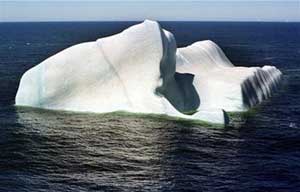 |
|
A 700-meter-long iceberg off the coast of Argentina |
Scientists studying the vibrations of the Earth’s crust in Antarctica believe they have discovered an “iceberg song.” This intriguing finding was published in the latest issue of the Science journal today.
The sound waves emitted by this iceberg have a frequency of around 0.5 hertz, which is very low and thus inaudible to humans. However, if they were emitted at a higher frequency, they would sound like a swarm of bees buzzing or an orchestra warming up, scientists noted.
The Alfred Wegener Institute in Germany, which specializes in polar and maritime research, published the results of their study, conducted since 2002, in the Science journal. From mid-July to November 2002, researchers recorded unprecedented sound signals while monitoring seismic signals to measure earthquakes and tectonic activity in the Ekström Ice Shelf region along Antarctica’s southern Atlantic coast.
While tracking these signals, scientists discovered a 50 by 20 km iceberg that collided underwater beneath the peninsula, gradually breaking apart the surrounding ice. “This iceberg is stuck on the ocean floor, so it looks like a rock in a river. Water pushes through its crevices, creating high pressure, and the iceberg begins to sing. The melodies rise and fall, like a real song,” said scientist Vera Schlindwein.
T.VY
















































